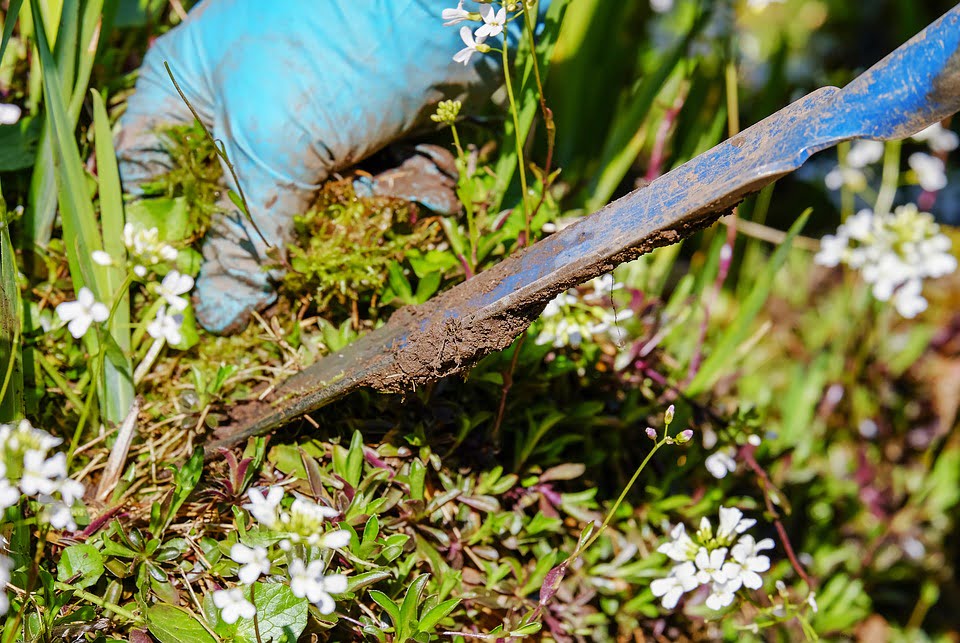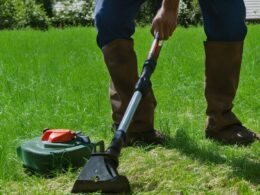It’s nearing Halloween so we’re going to start out with something that should scare you; weeds. Yikes! No one wants to see weeds in their perfectly manicured lawn. It’s a disheartening sight to see weeds start to sprout in your nice grass or garden. There’s a tough battle ahead with stubborn common weeds. The good news is that there are lots of ways to prevent weeds and to get rid of weeds so don’t get too spooked about it. First, you need to identify the common weeds in your yard in order to plan an attack. Identifying the kind of weeds you have is the most important step to weed prevention and treatment. Here is your guide to common weeds in the garden.
What Exactly Is a Weed?
Let’s go over what a weed actually is. A weed is any plant that is growing where you don’t want it to and competing with the plant that you’re trying to grow. So technically, any plant could be a weed. If you’re trying to grow a watermelon but some leftover corn from last year has started to sprout, that corn could be considered a weed. Most of the time, however, a weed doesn’t produce fruit and has lots of seeds that spread quickly causing them to take over your garden or lawn. These are known as common weeds. Common weeds compete for water, light, and nutrients causing your garden to suffer.
Why is Deadheading Flowers Important in Preventing Weed Growth?
Deadheading flowers methods are crucial in preventing weed growth. By removing the spent blooms, you prevent the formation of seeds that could lead to unwanted weeds. Deadheading also promotes more blooms, enhancing the overall aesthetic of the garden. It’s an effective way to maintain a weed-free and vibrant flower bed.
Common Weeds
Pigweed

Image Source: Almanac
Pigweed is a tough competitor, but you’re tougher! This common weed fights long and hard for the battle of resources. Do your best to pull out pigweed before it flowers because if it flowers, that means it has already spread a whole lot of seeds. That will make your job a lot harder. Pigweed is easy to identify because of its unique look. The top of the weed looks a little fuzzy. It also has a reddish stalk. Pigweed is easy to spot because it will usually stand a little taller than things in your garden since it grows so fast. Pull it out once you spot it.
Crabgrass

Image Source: Almanac
Crabgrass is a little easier to control and get rid of than pigweed. Usually, crabgrass dies at the end of each Summer when the first frost hits. However, the crabgrass will grow back each year unless you take care of it. Typically, all it takes is mowing your lawn to prevent the spread of crabgrass. Keeping your lawn mowed doesn’t allow crabgrass to flower or spread its seeds, therefore there won’t be any new crabgrass patches. Pull out crabgrass as soon as you notice it and keep your lawn mowed. Crabgrass in the garden can simply be uprooted. That usually gets the job done.
Dandelion

Image Source: Almanac
As much as children love to pick the bright yellow flowers and give them to you, they’re still common weeds. Dandelions are stubborn because you need to pull out the entire root system in order to prevent it from coming back. You’ll need to dig deep down to pull up the roots to get rid of dandelions or use a weed killer. Mowing is no use on dandelions because the roots go too deep for mowers to reach, pull them up in gardens. Dandelions are edible and a lot of people like to put them in fresh salads. In fact, there a bunch of dandelion recipes out there!
Purslane

Image Source: Almanac
Purslane is actually a little succulent weed. The best way to get rid of purslane is to simply keep on top of your weeding. Pull out the weed as soon as you notice it start to develop and make sure that you pull out the entire root. Leaving some parts of the root just means it will grow back in a couple of days. Mulch works great for purslane prevention as well. Organic mulch should be at least 3 inches thick to prevent weeds.
Canadian Thistle

Image Source: Almanac
This is a monster of a common weed. It’s easy to identify because it’s full of little spikes and prickles. You don’t want to step on one of these. These are extremely hard to get rid of because their root system can expand horizontally 15 feet underground! This makes getting rid of thistle very hard. Get rid of thistle as soon as you see it by using a glove to pull it out or by using a hoe. Growing a competitive crop near thistle will help significantly. Winter rye is a great competitor for thistle and will help take away resources and nutrients from the horrible weed.
Bindweed Morning Glory

Image Source: Almanac
Although the name is beautiful, sometimes the weed is not. Morning glory has little white flowers that are pretty to look at but can be really obnoxious. This weed grows quickly and quietly. It creeps around and suffocates other plants. The bad news is that tilling and cultivation only seem to help spread bindweed seeds. Bindweed needs to be taken care of before it becomes a perennial plant, meaning before it comes back every year. The best way to take care of bindweed is to pull it out early. This is the key to prevent the bindweed from becoming perennial.
Shepherd’s Purse

Image Source: Almanac
This weed is annual so it needs new seeds every year in order to grow. That means it’s easier to control if you stop the seeds from spreading. These common weeds are typically found in gardens and you’ve probably seen a whole bunch of them. Simply pull out the weeds by the roots every time you see one and you should be in good shape. You might need to use an herbicide if the problem is really bad.
Chickweed

Image Source: Almanac
Chickweed has a shallow root system so it’s actually pretty easy to uproot or dig up with a hoe. Use an organic or synthetic mulch to help keep the chickweeds at bay in your garden. Organic mulch should be at least two inches deep to suffocate weeds. Chickweed that grows in lawns will be suffocated if your lawn is healthy and lush. The weed will not have enough access to resources to flourish and it will die off. Chickweed is also edible and can be added to all sorts of meals. It is said to add a spinach-like flavor to whatever you add it to.
Summing Up
There are many types of common weeds, but hopefully this article has helped you identify the weeds that you have problems with. Now that you know what kind of weed you have, you’ll be able to plan an attack. Maybe by simply pulling out the weeds and staying on top of them, you’ll be able to prevent them from spreading. Other weeds might require some herbicide or more extreme measures.
Related Article: Best Weed Killer: Top 10 to Get Your Lawn Looking Great








